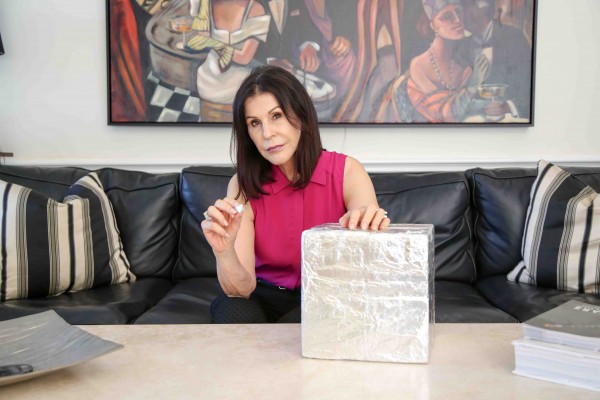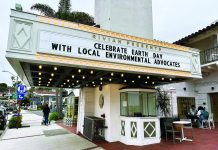
Photo by Jody Tiongco
The California Coastal Commission voted unanimously Tuesday, Oct. 6, to grant Southern California Edison a 20-year permit for nuclear waste storage at the San Onofre Nuclear Generating Station, which borders Orange County.
Officials at Rosemead-based Edison, the majority owner of the idled nuclear plant, said the current storage area is nearing capacity.
Edison estimated that it will need up to 80 more steel-and-concrete-encased canisters, a technology known as dry storage, to store 1,600 metric tons of volatile radioactive nuclear waste at the plant. About two-thirds of San Onofre’s used fuel – 2,668 spent fuel rods – are currently stored on site in steel-lined, concrete storage pools known as wet storage.
Environmental groups argued that it makes no sense to store the spent fuel next to the shoreline in an earthquake-prone area. Commission staff disclosed an intense lobbying effort prior to the meeting, mostly in scores of emails from opponents of the plan.
A group of local activists as well as others voiced their objections to Edison’s plan at the hearing.
Edison contended that below-ground concrete silos that will house the dry storage canisters exceeds state earthquake requirements, and will also be designed to protect against fire and tsunamis.
Commission staff recommended that the permit be approved, in part because the federal Nuclear Regulatory Commission said it meets safety standards. Staff also said the federal government hasn’t been able to provide a location for spent nuclear fuel to be stored. A proposed site in Nevada has been held up for years.
Rita Conn, organizer of the advocacy group Let Laguna Vote, voiced her objections to the type of canisters Edison is proposing to use, saying that the contracted company, Holtec International, has a poor track record for quality assurance.
Conn brought visual aids to the meeting to illustrate her point, showing Holtec’s proposed 5/8-inch thick casks compared to the 10-inch thick ones used at the nuclear plant in Fukushima, Japan, which she claims did not fail. “We know it can survive a 9.9 earthquake,” said Conn, who suggested that the NRC granted approval of the less robust casks due to lower costs to industry.
Moreover, Conn said, “no one knows what kind of shape the canisters will be in if the spent fuel stays on-site for 20 or more years before it’s moved, or if they’ll be safe to move.”
Edison is proposing to store the waste in canisters set below ground until the federal Energy Department finds a place and appropriate transportation to move them, according to the report.
The plant’s two nuclear-power units were shut down in January 2012 when a small leak occurred due to excessive wear in steam generator cooling tubes. The plant was permanently shut in June 2013.
“This fuel is highly radioactive and requires secure storage for thousands of years to prevent harm to humans and the environment,” the commission’s agenda report states.
| Also this week, Laguna Beach hosted an “education fair” organized by Edison to answer questions from the public regarding the decommissioning of the power plant and plans to store the nuclear waste. |
Rita Robinson and Andrea Adelson contributed to this article.





The Holtec canisters cannot be inspected or repaired. The Coastal Commission approved this on the assumption that this can be figured out in 20 years. Even the Holtec president, Dr. Singh, says you can’t repair these in the face of millions of curies of radiation from even a microscopic crack. He said even if you could, this would just introduce another corrosion factor. See Holtec speaking this on video at SanOnofreSafety.org. The Coastal Commission staff gets the problem. This decision was made at a higher level by giving decision makers “misleading” information. This battle at the Coastal Commission isn’t over. Also, the permit is not approved yet. There were revisions to the special conditions that need to be written and approved by the Commissioners at a future meeting.